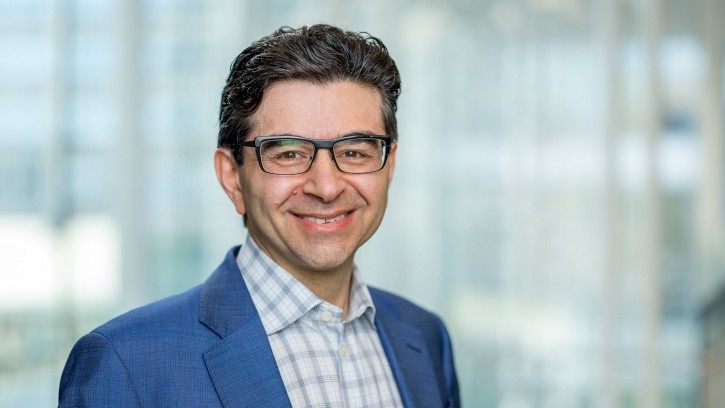Discover how Philips' Future Health Index 2024 is transforming global healthcare trends

This year’s report – Better care for more people - explores how healthcare leaders view their organization’s ability to deliver timely, high-quality care to everyone, with a focus on the gaps that stand in the way and how technology can help overcome them. Results are based on a quantitative survey among nearly 3,000 healthcare leaders across 14 countries, and this year is supported by qualitative interviews in four of the same countries.
Here, Shez Partovi, chief innovation & strategy officer at Philips, explains some of the key findings of the Future Health Index this year.
Can you elaborate on the key findings of the Philips Future Health Index (FHI) 2024 Global Report?
Three main themes emerge from the Future Health Index 2024, showing how healthcare systems are innovating care delivery to meet evolving patient needs with increasingly strained resources:
Firstly, there is a staffing gap. Healthcare leaders are worried about the negative impact of staff shortages on both their staff and on patient care, as well as the potential disproportionate affect on certain patient populations, ultimately exacerbating health disparities. Leaders overwhelmingly though see the positive impact of virtual care in easing staff shortages, such as the widespread adoption of remote patient monitoring. Healthcare leaders are turning to automation to improve productivity and efficiency, yet at the same time believe that healthcare professionals are largely skeptical about its use.
Secondly, there is an insights gap. While the vast majority of their organizations experience data integration challenges, healthcare leaders recognize the opportunity for data to improve the care they offer and identify the challenges they need to overcome in this area. They are moving to implementing technologies linked to actionable insights, such as AI, but are concerned about the implications of data bias.
Finally, there is a sustainability gap. Healthcare leaders are reducing costs and improving efficiencies to address the biggest impact from financial challenges - reduced investment in technology, longer waiting times and delayed access to care. They also acknowledge the need to include environmental considerations in their business approach with most saying it plays a role in tendering.
What specific AI-enabled technologies are highlighted in the report as solutions to these gaps?
This year’s Future Health Index shows how healthcare leaders have already implemented AI for clinical decision support across different areas of the hospital, such as in-hospital patient monitoring, treatment planning, medication management, radiology, and preventive care leading the pack.
As healthcare leaders increasingly focus on expanding care beyond hospital walls, implementing AI in remote patient monitoring is an area of focus for the next three years.
Can you provide examples of new care delivery models discussed in the report?
One in two healthcare leaders (50%) is concerned about patients having to travel farther to receive appropriate care – highlighting the importance of new care delivery models that improve access to care for patients in both rural and urban areas.
As part of the qualitative interviews, healthcare leaders in the UK and the US mentioned smaller and specialized community-based clinics, such as diabetes centers, as well as mobile care vehicles equipped with imaging solutions so that clinical staff can scan patients closer to their home.
How does the FHI 2024 Global Report suggest overcoming the staffing gap in healthcare?
In the face of widespread staffing shortages, healthcare leaders are turning to automation, virtual care and remote patient monitoring to alleviate the pressure on hospital staff, reduce waiting lists and extend the reach of patient care.
Almost 1 in 3 healthcare leaders worldwide (32%) say virtual care is also enabling them to expand specialist care to underserved communities in the face of staff shortages. This is especially the case in China (42%), India (41%), and the US (40%), where patients may have to travel long distances to access specialist care.
More than 1 in 3 healthcare leaders (37%) believe attracting and retaining staff requires help from external partnerships, for instance in the US and South Africa, leaders noted in interviews the value of partnering more closely with local colleges and universities, to ensure a steady pipeline of qualified healthcare professionals. Offering more educational opportunities to existing staff could keep them engaged in their careers and prevent further attrition too.
What strategies are proposed to bridge the insights gap in healthcare data and decision-making?
Our findings show healthcare leaders grappling with a lack of integration of data across different systems and devices. But leaders recognize the potential of data-driven insights to facilitate targeted outreach and interventions for specific populations (42%). They also believe such insights can help identify and address delays in care delivery that may disproportionately affect certain communities (41%).
For example, by analyzing data on patient demographics, medical histories, and social determinants of health, providers can identify patient populations who may be at high risk for chronic conditions and take proactive steps to provide preventive care, such as offering screenings for diabetes and heart disease.
How does the report address the economic gap in healthcare and propose solutions to manage costs?
Healthcare leaders are taking necessary measures within their organizations to remain financially viable and ensure continuity of care, with the most frequently used or planned strategies to address
implementing cost reductions (91%) and improving operational efficiencies (92%).
At the same time, healthcare leaders realize they cannot cut or streamline their way to long-term financial sustainability, with 89% of them using or planning growth strategies to serve more patients or expand services. Long term, healthcare leaders also plan to invest in preventive care and community health to lower overall healthcare costs, supported by new business models (such as community care centers) and value-based care models that incentivize improved patient outcomes rather than the volume of care delivered.
What role does Philips see itself playing in addressing the gaps in the healthcare industry?
The Future Health Index 2024 highlights the actions that healthcare leaders are taking to achieve delivering high-quality care to all. From implementing AI to making sense of vast amounts of data to embracing new possibilities in virtual care and remote patient monitoring, Philips provides solutions that help organizations address the challenges they are facing.
With AI, data science and sustainability at the forefront of our innovation and design, our solutions help increase productivity and deliver better care for more people through our platforms of monitoring, imaging, interventional, and enterprise informatics.
What are the most significant barriers to implementing AI solutions in healthcare, according to the report?
There is a shared recognition that AI needs to be implemented in a responsible and ethical way to avoid unintended consequences.
Almost 9 in 10 healthcare leaders (87%) are concerned about the possibility of data bias in AI applications widening existing disparities in health outcomes. Healthcare leaders say it is important to make AI more transparent and interpretable for healthcare professionals and offer continuous training and education in AI.
Healthcare leaders also pointed to policies for the ethical use of data and AI, and several also raised when interviewed concerns about who is accountable and liable when AI gives faulty recommendations, which could have potentially serious consequences for patient safety and well-being. It’s critical to ensure that appropriate checks and balances are in place to mitigate these risks, including adequate human oversight in clinical decision-making.
How can healthcare organizations better prepare for the integration of AI technologies?
To mitigate the risk of data bias in AI applications for healthcare, the top selected strategies were
making AI more transparent and interpretable (48%), continuous training and education in AI (46%), policies for ethical use of data and AI (43%), bias detection and monitoring (41%), ensuring staff diversity in data and AI (38%) and diverse and representative data collection (37%).
With regard to accountability and liability when AI gives faulty recommendations it’s critical to ensure that appropriate checks and balances are in place to mitigate these risks, including adequate human oversight in clinical decision-making. Most important, while healthcare leaders are making the investments in AI, they need to make sure their clinicians – doctors and nurses – are also on board.
How has the scope and focus of the FHI report evolved over its nine years?
Each year our Future Health Index report focuses on a different aspect of the future of healthcare. As a global leader in health technology, at Philips we strongly believe we have a key role to play in offering valuable insights and initiating conversations around possible solutions to global healthcare challenges.
Our audience are senior leaders in the healthcare industry, healthcare professionals, policymakers and other stakeholders – in both developed and emerging countries.
The majority of the survey questions change each year. Parallels may be drawn with previous Future Health Index reports; however, the sample sizes and countries included may have changed and therefore it is not a like-for-like comparison.




















